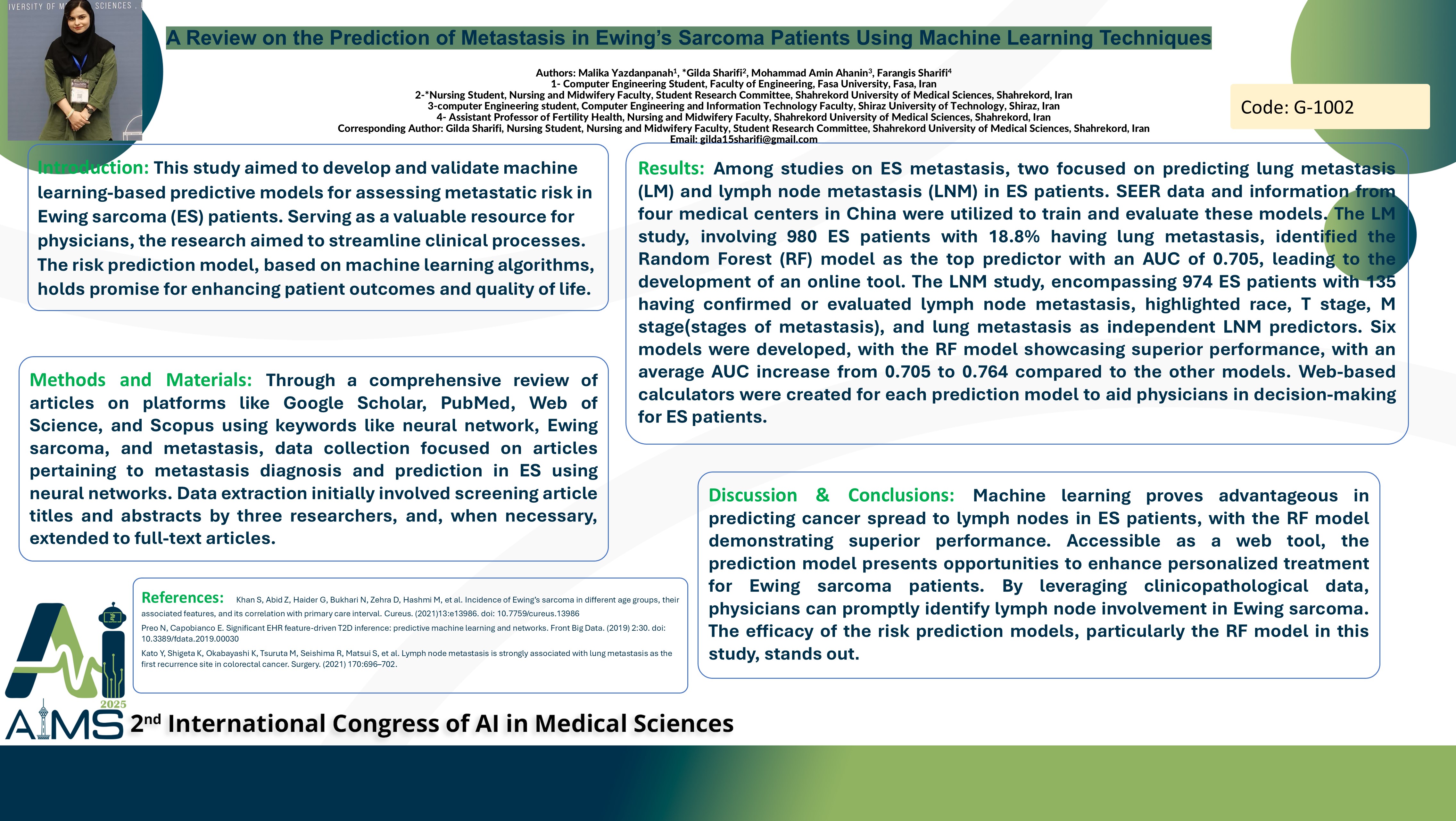مروری بر پیشبینی متاستاز در بیماران سارکوم یوینگ با استفاده از تکنیکهای یادگیری ماشینی
کد: G-1002
نویسندگان: Melika Yazdanpanah ℗, Gilda Sharifi *, Mohammad Amin Ahannin, Farangis Sharifi
زمان بندی: زمان بندی نشده!
برچسب: دستیار مجازی هوشمند
دانلود: دانلود پوستر
خلاصه مقاله:
خلاصه مقاله
Introduction: This study aimed to develop and validate machine learning-based predictive models for assessing metastatic risk in Ewing sarcoma (ES) patients. Serving as a valuable resource for physicians, the research aimed to streamline clinical processes. The risk prediction model, based on machine learning algorithms, holds promise for enhancing patient outcomes and quality of life. Method: Through a comprehensive review of articles on platforms like Google Scholar, PubMed, Web of Science, and Scopus using keywords like neural network, Ewing sarcoma, and metastasis, data collection focused on articles pertaining to metastasis diagnosis and prediction in ES using neural networks. Data extraction initially involved screening article titles and abstracts by three researchers, and, when necessary, extended to full-text articles. Findings: Among studies on ES metastasis, two focused on predicting lung metastasis (LM) and lymph node metastasis (LNM) in ES patients. SEER data and information from four medical centers in China were utilized to train and evaluate these models. The LM study, involving 980 ES patients with 18.8% having lung metastasis, identified the Random Forest (RF) model as the top predictor with an AUC of 0.705, leading to the development of an online tool. The LNM study, encompassing 974 ES patients with 135 having confirmed or evaluated lymph node metastasis, highlighted race, T stage, M stage)stages of metastasis), and lung metastasis as independent LNM predictors. Six models were developed, with the RF model showcasing superior performance, with an average AUC increase from 0.705 to 0.764 compared to the other models. Web-based calculators were created for each prediction model to aid physicians in decision-making for ES patients. Conclusion: Machine learning proves advantageous in predicting cancer spread to lymph nodes in ES patients, with the RF model demonstrating superior performance. Accessible as a web tool, the prediction model presents opportunities to enhance personalized treatment for Ewing sarcoma patients. By leveraging clinicopathological data, physicians can promptly identify lymph node involvement in Ewing sarcoma. The efficacy of the risk prediction models, particularly the RF model in this study, stands out
کلمات کلیدی
Neural network, Ewing sarcoma, Metastasis
